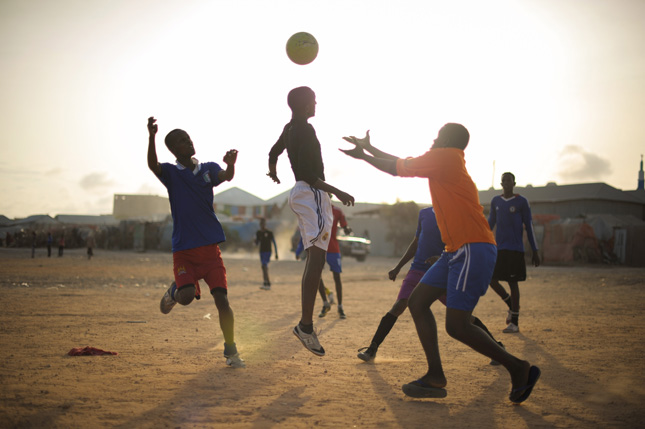-
Forever Young: Engaging Youth to Build Stability and Reduce Violence
July 31, 2018 By Amanda King
“There are more young people in the world today than in any other time in the history of the world,” said Beza Tesfaye, Senior Researcher at Mercy Corps, at a recent event at the U.S. Institute of Peace on Mercy Corps’ efforts to engage youth in Somalia and Afghanistan in order to promote stability and prevent violence. “As we know, marginalized youths are the ones often to be recruited into violent movements. Not only do we have to focus on conflict, but we also have to put youth at the center of development programs to address these issues.”
In Somalia, roughly 70 percent of the population is under the age of 30. Mercy Corps’ project, the Somali Youth Learners’ Initiative (SYLI), increased their access to secondary education and civic engagement opportunities. In Afghanistan, INVEST in Kandahar provided vocational training and unconditional cash transfers to young people.
In both cases, Mercy Corps found that stand-alone interventions were not effective in reducing young people’s support of violence. However, joint interventions – including two or more components – can change attitudes around political violence, especially when governance is addressed. The reasons why youth engage in violence are complex and multidimensional, so interventions to break the cycle must be multidimensional as well.
Youth under 30 comprise 64 percent of Pakistan’s population—and they played a key role in last week’s election of former cricket star Imran Khan. As the country’s recent elections approached, another USIP event asked whether these youth would cause its fragile democracy to “boom or bust.”
“The hope is for a second peaceful transition of power from one democratic republic to the next,” said Jumaina Siddiqui, a Senior Program Officer with USIP’s Asia Center. “Media coverage is on the growing violence in respect to political parties and candidates. However, one area of their media coverage that has been neglected has been youth,” she said.
According to Adil Najam, Dean of the Frederick S. Pardee School of Global Studies at Boston University and the author of the Pakistan National Human Development Report, “the future of Pakistan, good or bad, will be decided by those who are between 15 and 29 years of age today. Every election between now and 2045 is going to be decided by young voters and predominately new voters.”
“Regardless of who wins Pakistan’s elections, whoever will be in power, if they don’t address the youth’s concerns in a concrete and fiscally responsible way, they are going to basically be unsuccessful in empowering the youth, and be unsuccessful in dealing with Pakistan youth’s education, engagement, and empowerment,” said Sahar Khan, a Visiting Research Fellow at the CATO Institute.
Since September 11, 2001, Pakistan’s Federally Administered Tribal Areas have become a war zone, with Pakistan’s military conducting counter-terrorism operations in the region. There is a “bad perception of the military from youth [who believe] that the war is not against terrorism, but a war against people,” said freelance journalist Pir Zubair Shah. The conflict has displaced many people and destroyed infrastructure, and the region’s youth “want to go back to their homes and get along with their lives.”
Read More:
- Youthful clusters can pressure a country’s ability to provide education, health care, and employment. As Nicaragua’s age structure matures, will the country’s social and economic indicators—and its chances of a peaceful democracy—improve?
- Youthful countries in sub-Saharan Africa have the opportunity to open the demographic window to greater peace and prosperity—but will they?
- Are younger countries at higher risk of civil conflict? Richard Cincotta discusses the three key factors that complicate the relationship between age structure and intra-state conflict.
Sources: FirstPost, Mercy Corps, United Nations Development Program, U.S. Agency for International Development, United States Institute of Peace
Photo Credits: Children play football next to an IDP camp in Mogadishu, August 2013. AU UN IST by Tobin Jones.
Topics: Afghanistan, demography, development, featured, On the Beat, Pakistan, population, security, Somalia, youth
 A Publication of the Stimson Center.
A Publication of the Stimson Center.




